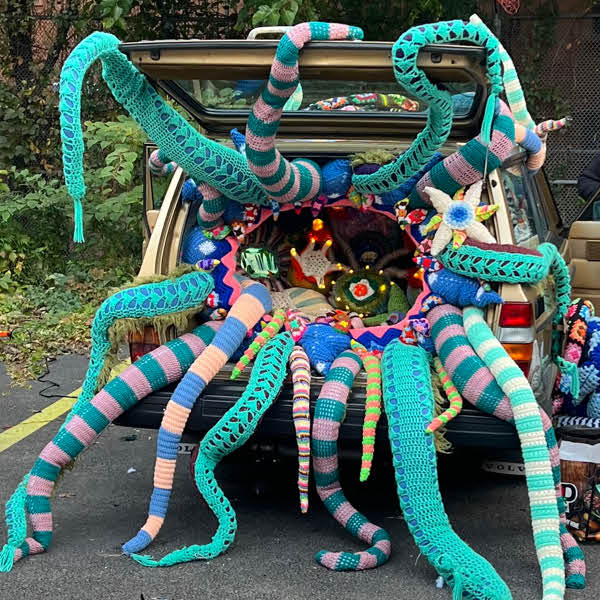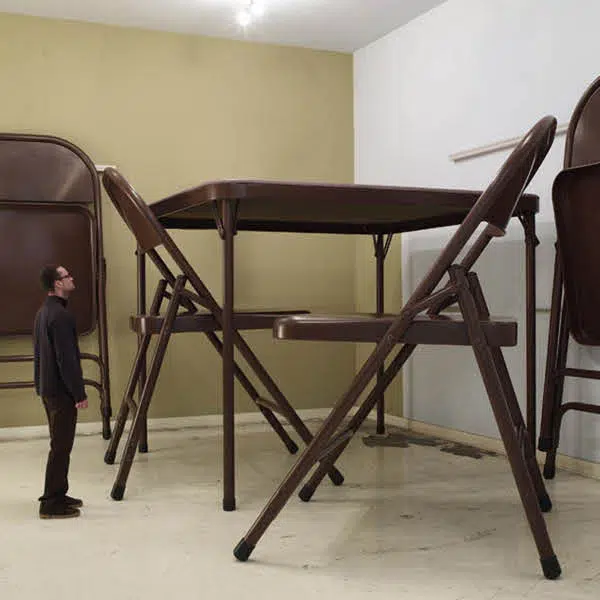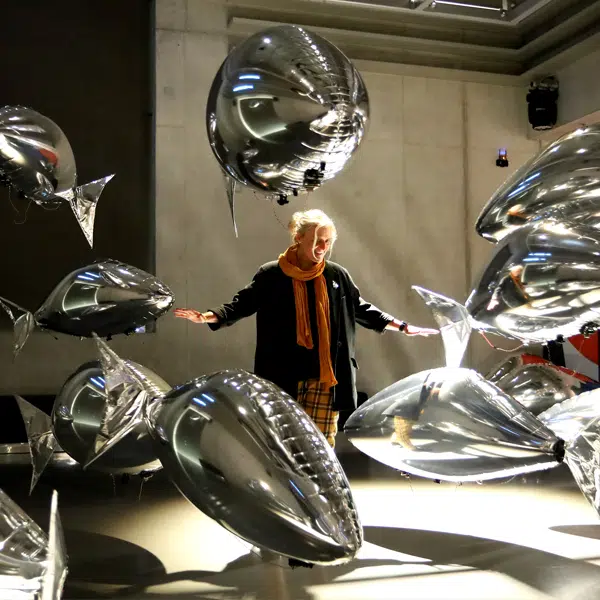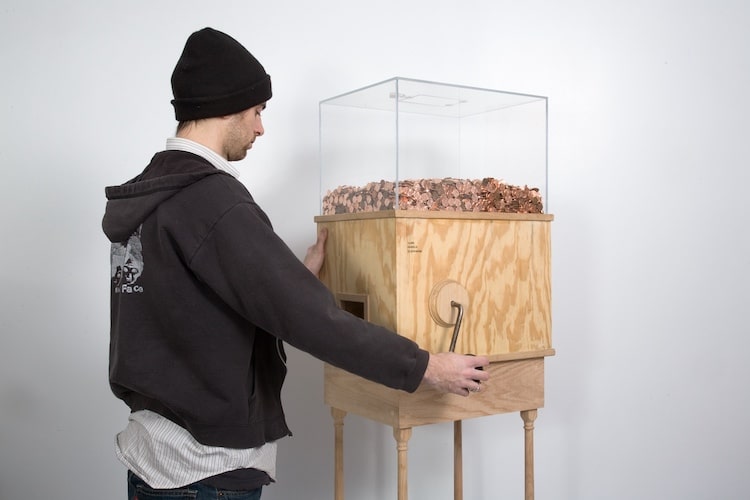
Conceptual artist Blake Fall-Conroy creates work that often touches on socio-economic themes. As a self-taught engineer, many of his art pieces involve mechanisms that allow him to get his point across. This is most evident in his Minimum Wage Machine, a lightning-rod installation that speaks about the value of labor and one's time. People are asked to turn a crank that will then release a penny at specific intervals. It is precisely timed so that if someone cranked for an hour, they would earn the minimum wage of their state.
This thought-provoking concept has garnered much online success since it was first created in 2008. At the time, it was inspired by Fall-Conroy's job during college, where he earned $6.50 an hour at a gas station in rural Maryland. Working alone, he had plenty of time to calculate just how many seconds ticked by before he earned a penny. By distilling an American's work life into the most basic piece of U.S. currency, he's drawing a direct line between the essential units of time, currency, and labor. Minimum wage is often hotly debated and with Minimum Wage Machine, Fall-Conroy is able to break down the complexities of the issue with a simple mechanism.
“I have heard and read lots of discussion around this project, along the lines of ‘well it doesn't deduct for taxes…' or ‘what if it powered this, or did this thing…' or ‘what if it paid you this much..' etc,” Fall-Conroy tells My Modern Met. “That's great. The machine has gotten people to start thinking about these things, this idea of how much one's time and labor is worth, what having a minimum wage means, what it means to be a worker. I think these are productive conversations to be having, and my favorite artworks are ones that make me think critically about my place in society.”
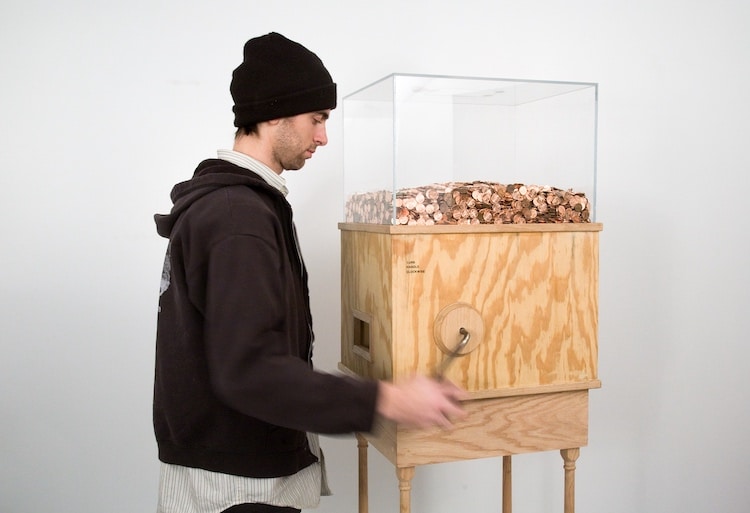
The creation of the machine itself was a marriage between concept and design. Fall-Conroy gave himself a challenge—the art piece needed to be both accurate and reprogrammable so that it would function in different locations. He also had to accommodate for pennies jamming and other mechanical errors that forced him to continually create new, better mechanisms over the years. When Minimum Wage Machine next goes on show in New York City it will release one cent for every 2.4 seconds of cranking. For an hour of cranking, one would earn the current New York City minimum wage of $15.
So why does Fall-Conroy think that Minimum Wage Machine has enjoyed such continuous success since its conception? He says, “I think part of the reason it is repeatedly popular online is that it really distills this idea of work for a lot of people. I think people can sometimes feel like they are ‘just a body turning a crank' within our late-capitalist economic system, and so the image and the machine really resonates with people. Also, it's sort of funny. There is an ‘aha' moment when someone understands what it is doing.”
If you want to see Minimum Wage Machine in action, it will be part of the Museum of Capitalism exhibit at the Parsons School of Design's Kellen Gallery in New York City from October 30 to December 11, 2019.
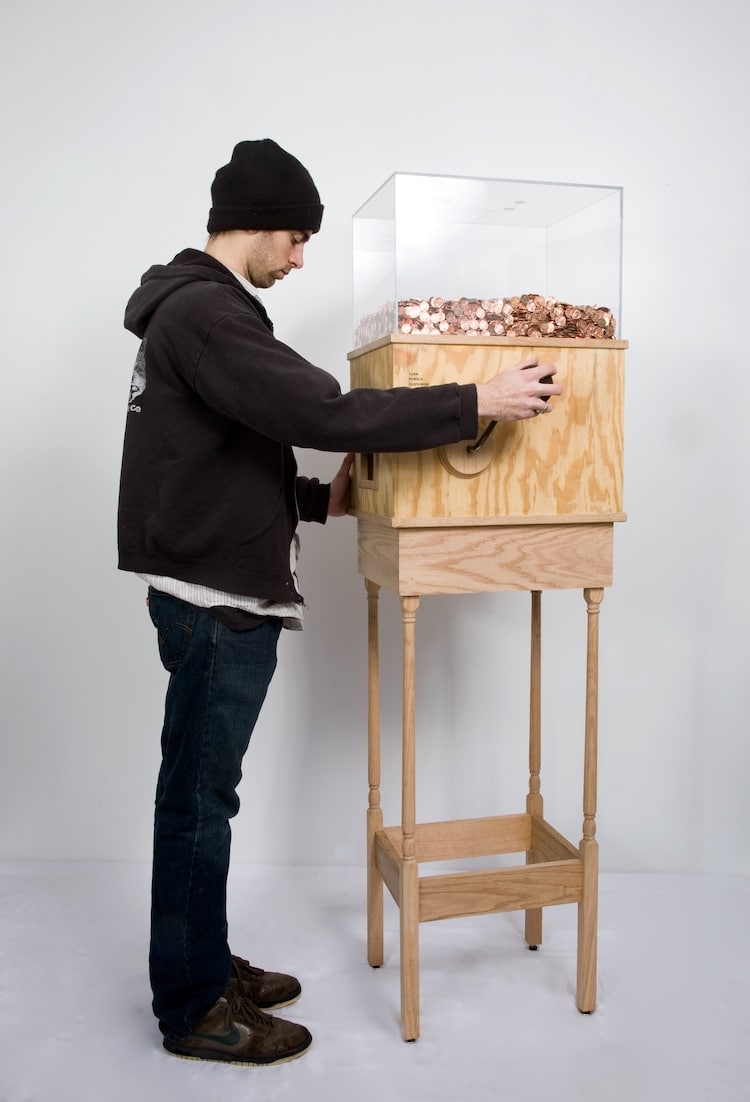
Blake Fall-Conroy: Website | Instagram
All images by Christine Elfman. My Modern Met granted permission to feature photos by Blake Fall-Conroy.
Related Articles:
Fully-Furnished Rooms Installed in the Cramped Underground Manholes of Milan
Clever Sculpture Installation “Shines a Light” on Our Obsession with Technology
Interview: Artists Use Beam of Light to Visualize the Line of Rising Sea Levels




















































































